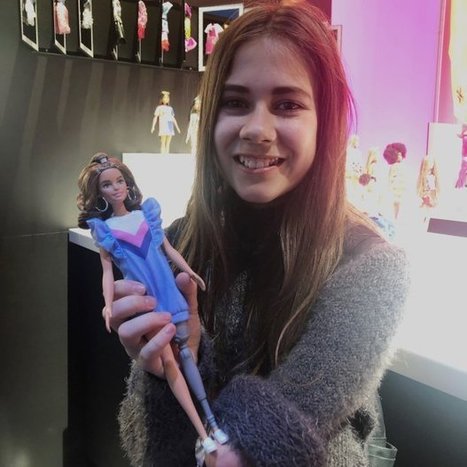 Your new post is loading...
 Your new post is loading...

|
Scooped by
John Evans
|
At 13, Jordan Reeves’ Maker cred is already impressive. She created her own 3D-printed, unicorn horn-shaped, glitter-shooting prosthetic that fits her left arm, which ends just above the elbow. Her Unicorn Project inspired Jordan and her mom Jen to start a non-profit, Born Just Right, to help other kids with limb differences learn to improve their lives with making too.
Jordan’s also a founding member of the STEAM Squad, a diverse group of some of the most accomplished girls involved in science, technology, engineering, art, and math today (which also includes Mythbusters Jr. co-host Allie Weber).
She has shown off her work at Maker Faire, AIGA, Parson’s School of Design, and many other venues across the country. And her experience with design has given her a chance to consult and offer insight to large brands across many different genres.
This is all to say that perhaps my coolest experience at Toy Fair New York this year was getting to meet Jordan and Jen and tag along when they finally got to see the fruits of their long-brewing collaboration with Mattel — the latest additions to their Barbie Fashionista line, which includes dolls with different body types, hair textures, skin tones, and now has dolls in wheelchairs and a doll with a prosthetic leg.
|

|
Scooped by
John Evans
|
Makerspaces are exciting playground spaces in schools where educators can foster creativity, innovation, and design skills. Often these spaces are filled with high-tech gadgets for 3D printing, robotics, and circuitry experimentation.
While there’s infinite potential in these spaces, educators must design for inclusion of all students, including those with sensory and motor disAbilities, in the physical spaces and the learning activities within. (In this article we use the term disAbilities, with a purposeful capitalization of the A to keep our focus on the abilities of students and to mirror the language we used in a pilot college course we developed.)
|




 Your new post is loading...
Your new post is loading...








Inspiring!